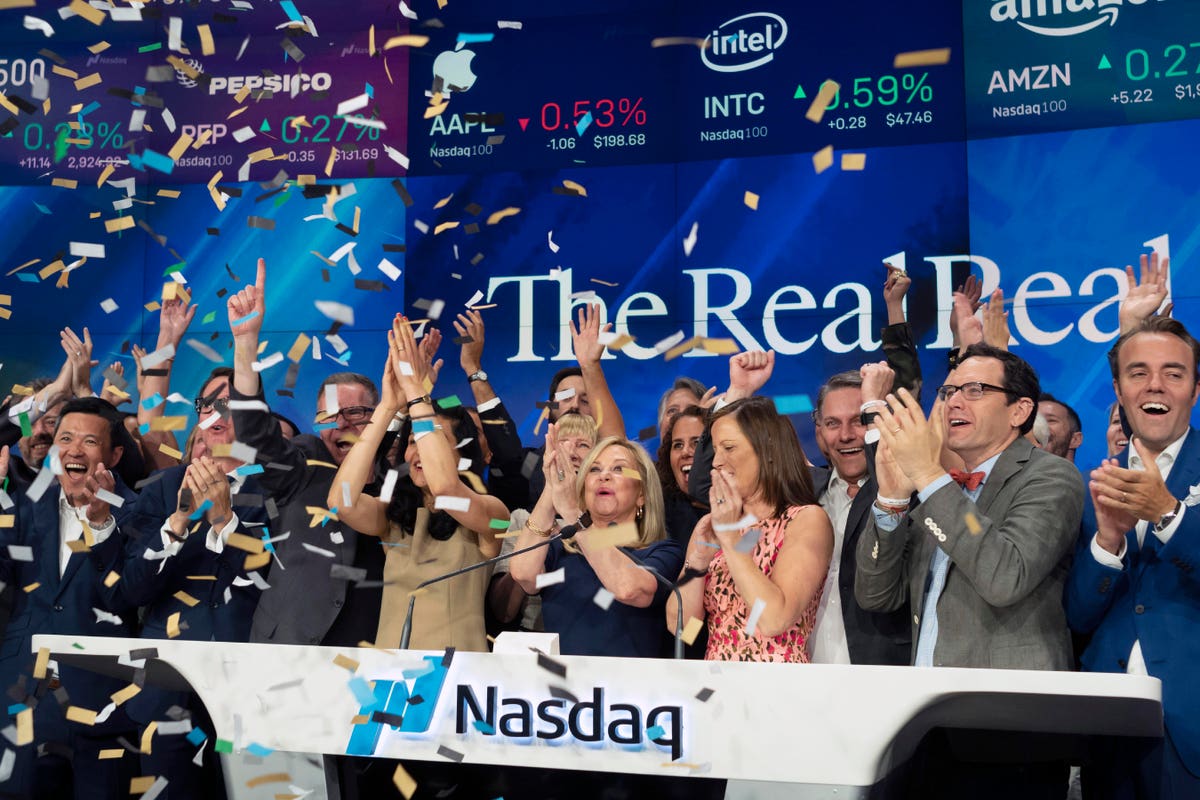Over the last several years, the combination of growth in e-commerce and focus on sustainability and circularity in the fashion supply chain has changed the industry. Among other things, the business previously known as “used” or “thrift” has become cool; now it’s called “vintage” or “resale.”
Probably the best-known resale company is The RealReal. At the time of its creation in 2011, investors were focused on fast growth and not profitability. The business was structured to become the biggest force in resale and investors kept putting money in to fund losses. To date, The RealReal has raised over $600 million in capital.
The RealReal built a huge infrastructure to support the business. Since public information has been available, losses have never been less than almost 30 cents for every dollar of revenue in any 12-month period.
There are a few reasons why the resale business attracted all that capital and has been perceived as a growth (and profit) opportunity:
- It’s what consumers, especially younger consumers, want to buy.
- It’s democratizing, providing access to great brands for consumers who can’t afford first-price merchandise.
- It’s a great way for brands to be exposed to consumers who can’t yet afford the first-price merchandise.
- It’s sustainable. It converts items that are doing nothing sitting in closets into money for owners. It takes those unused products and gets them into use again. Very likely, it replaces the resources used to create a new product that a consumer would otherwise buy.
The Bad Stuff About Resale
With all good intentions and great values, resale has a lot going against it and no company has been able to make resale into a scaled, profitable business.
Here’s why:
A typical retailer can order 1,000 dozen of an item from their supplier with one email. When the product arrives at the store or warehouse, some items are randomly inspected but most likely the 12,000 products are all virtually identical and won’t require individual handling. The expense of placing an order is nearly nothing.
Resale is different.
Every item has to be coaxed from consumers’ closets with marketing and advertising. Every item has to be individually shipped to the reseller.
No two resale items are the same. Each product has to be inspected individually and get its own written description.
All of this takes people’s time and costs money that traditional retailers don’t have to pay.
And there’s more bad news.
The high price of many resold items like designer handbags motivates fraudsters to make fakes that go into the resale market. Every time a fake handbag gets sold, it’s an incentive for the fraudster to make more products and to get better at making them look real. Authentication costs money.
The RealReal is leveraging technology to authenticate products but that’s tough to build and implement. Aaron Provine, CEO of Geartrade, a resale site for sports gear which uses artificial intelligence in its processes, told me, “AI is great for getting everything ready for consumer sale. But we haven’t found a great solution for verification outside of our people verifying the item.” Problems with verification of authenticity at The RealReal is what led to my buying a fake Christian Dior bag from the RealReal for $3600 (as described in this article).
The RealReal’s fixed costs alone, even after the company’s recent drive to profitability, are over 90% of revenue in the last twelve months and have historically been higher.
Where The RealReal Stands
As of its most recent financial statement The RealReal has about $189 million in cash left from the $600 million it raised.
Investors’ mindsets have changed. Growth is no longer the primary goal, there has to be profitability. The RealReal has to get profitable before the cash runs out.
Among the securities sold by The RealReal is a set of convertible notes. $169 million of those notes are due in March 2025. For the securities to be convertible, the stock price needs to be more than six times what it is today which is highly unlikely. More likely is that the company will have to find $169 million to repay the notes.
Another set of similar notes in the amount of $288 million is due in 2028.
If the due date comes and the company can’t pay, it will either restructure or wipe out the shareholders, go bankrupt, merge into another entity, change the business model, liquidate or a combination of the above.
The RealReal’s hope is that it can fix the business and get more financing to keep on going.
The company that has reached $600 million in revenue, never came close to making money and handles physical products (as opposed to software or services). I’ve never heard of a company like that that becomes successful and I don’t believe it’s ever been done.
Management is trying. The new CEO has instituted programs to eliminate unprofitable revenue, use technology to reduce costs and find new sources of more profitable revenue.
They are making progress. But the journey is long, the costs are high, no, the costs are ridiculously high, and time is short. Management says they will be profitable for the full year 2024. I doubt that but even if they accomplish the goal with their turnaround plan and whatever accounting contortions they need to get there, the notes due in 2025 and 2028 require more than $450 million to be paid off.
Even if the company becomes profitable, that’s a long way from making enough money to refinance the debt and get a return on the $600 million already invested.
The Irony Of It
The odds that The RealReal will fail are pretty high. But in the future, The RealReal’s fundamental idea will be vindicated.
Right now, there is technology in place that will identify every individual product. Every garment, handbag and other consumer product will have its own identifier that a consumer, or reseller, can click on to know where it was made, where it was sold, what it’s made of, whether it’s the real thing or a fake and much more.
An enormous range of services will be available through that technology and one of those is the facilitation of resale.
The technology exists today (this article explains how the brand Chloe is already using it). When it’s fully implemented, acquiring used products on an individual level and verifying them will take no more than a scan. That will eliminate the huge cost burden that The RealReal lives with today and very likely make the business profitable.
But it’s going to take years, many years, maybe decades, for that to happen and The RealReal as it exists today will be long gone by that time.
The other factor that has held back the resale business is the resistance of brands who fear that consumers would buy vintage and cannibalize the sale of new products. Over time, brands are finding the resale is a plus and not a negative and getting on board. Their involvement validates the business, makes authentication more efficient and offers new channels for the sale of resold products. That is also part of the future.
In time, The RealReal’s founders, managers and investors will have the satisfaction of knowing they were ahead of the curve. But most likely they will not have the financial reward for it.
The challenge, even the tragedy, of the resale business right now is this: When consumers want something, there is a real business in providing it to them. But the rush to meet consumer demand is always subject to basic economics and in financial markets, the excitement of a new business opportunity often relies on hope and faith that doesn’t always fit neatly into reality.
Matching consumer demand to profitability is the key to wealth. Having one of those without the other has never been a road to long-term success and wealth generation.
I wish The RealReal success in its path to profitability. But whatever happens, it’s not a verdict on the resale business, it’s an iteration in finding the business model that will work with the ever-growing demand for resold products.
Read the full article here





